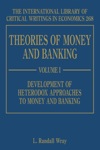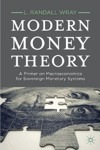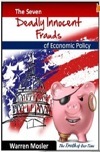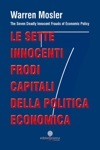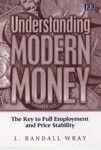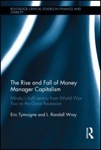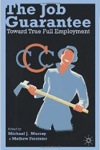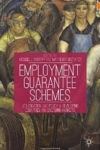By Michael Hudson*
You almost could hear the bankers heave a sigh of relief when Haiti’s earthquake knocked the Financial Crisis Inquiry Commission hearings off the front pages and evening news broadcasts last week. At stake, after all, is Wall Street’s power grab seeking to centralize policy control firmly in its own hands by neutralizing the government’s regulatory agencies. The first day – Wednesday, January 15 – went innocuously enough. Four emperors of finance were called on to voice ceremonial platitudes and pro forma apologies without explaining what they might be apologizing for. Typical was the statement by Goldman Sachs chairman Lloyd C. Blankfein: “Whatever we did, it didn’t work out well. We regret the consequence that people have lost money.”
Their strategy certainly made money for themselves – and they made it off those for whom the financial crisis “didn’t work out well,” whose bad bets ended up paying Wall Street’s bonuses. So when
Paul Krugman poked fun at the four leading “Bankers without a clue” in his New York Times column, he was giving credibility to their pretense at innocent gullibility.
Recipients of such enormous bonuses cannot be deemed all that clueless. They blamed the problem on natural cycles – what Mr. Blankfein called a “100-year storm.” Jamie Dimon of JPMorgan Chase trivialized the crisis as a normal and even unsurprising event that “happens every five to seven years,” as if the crash is just another business cycle downturn, not aggravated by any systemic financial flaws. If anything, Wall Street accuses liberal government planners of being too nice to poor people, by providing cheap mortgage credit to the uninitiated who could not quite handle the responsibility.
But the Wall Street executives were careful not to blame the government. This was not just an attempt to avoid antagonizing the Congressional panel. The last thing Wall Street wants is for the government to change its behavior.
I think the Wall Street boys are playing possum. Why should we expect them to explain their strategy to us? To understand their game plan, the Commissioners had to wait for the second day of the hearings, when Sheila Bair of the Federal Deposit Insurance Corp. (FDIC) spelled it out. Their first order of business is to make sure that the Federal Reserve Board is designated the sole financial regulator, knocking out any more activist regulators – above all the proposed Consumer Financial Products Agency that Harvard Professor Elizabeth Warren has helped design. Wall Street also is seeking to avert any thought of restoring the Glass-Steagall Act in an attempt to protect the economy from having merged retail commercial banking with wholesale investment banking, insurance, real estate brokerage and kindred arms of high finance.
Perception – and exposure – of this strategy is what made the second day’s hearing (on Thursday) so important. From Sheila Bair down to state officials, these administrators explained that the problem was structural. They blamed government and the financial sector’s short-run time frame.
The past few years have demonstrated just how thoroughly the commercial and investment-banking sector already has taken control of government. Having succeeded in disabling the Securities and Exchange Commission (SEC) to such an extent that it refused to act even when warned about Bernie Madoff, deregulators did not raise a protest against the junk accounting that was burying the financial system in junk mortgages and kindred accounting fraud.
The Comptroller of the Currency blocked local prosecutors from moving against financial fraud, citing a small-print rule from the Civil War era National Bank Act giving federal agencies the right to override state agencies. Passed in the era of wildcat banking, the rule aimed to prevent elites from using crooked local courts to protect them. But in the early 2000s it was Washington that was protecting national banking elites from state prosecutors such as New York attorney general Eliot Spitzer and his counterparts in Massachusetts and other states. This prompted Illinois Attorney General Lisa Madigan to remind the Angelides Commission that the Office of the Comptroller of the Currency and the Office of Thrift Supervision were “actively engaged in a campaign to thwart state efforts to avert the coming crisis.”*
By far the major enabler was the Federal Reserve Board (FRB). Acting as the banking system’s lobbying organization, its tandem of Alan Greenspan and Ben Bernanke fought as a free-market Taliban against attempts to introduce financial regulation. Working with the Goldman Sachs managers on loan to the Treasury, the Fed managed to block attempts to rein in debt pyramiding.
Mr. Bernanke ignored the very first lesson taught in business schools. This was the lesson taught by William Petty in the 17th century and used by economists ever since: The market price of land, a government bond or other security is calculated by dividing its expected income stream by the going rate of interest – that is, “capitalizing” its rent (or any other flow of income) into what a bank would lend. The lower the rate of interest, the higher a loan can be capitalized. At an interest rate of 10%, a $10,000 annual income is worth $100,000. At 5%, this income stream is worth $200,000; at 4%, $250,000. Mr. Bernanke thus rejected over three hundred years of economic orthodoxy in testifying recently that the Fed was blameless in fueling the real estate bubble by slashing interest rates after 2001. Financial fraud also was not to blame. Anointed with the reputation for being a “student of the Great Depression,” he showed himself to be clueless.
He is not really all that clueless, of course. His role is to play the “useful idiot” whom financial elites can blame to distract attention from how they have gamed the system. Wall Street’s first aim is to make sure that the Fed remains in control as the government’s central regulator – or in the present case, deregulator, able to disable any serious attempt to check Wall Street’s drive to load down the economy with yet more debt so as to “borrow its way out of the bubble.”
Public relations “think tanks” (spin centers adept in crafting blame-the-victim rhetoric) use simple Orwellian Doublethink 101 tactics to call this “free market” policy. Financial self-regulation is to be left to bankers, shifting economic planning out of the hands of elected representatives to those of planners drawn from the ranks of Wall Street. This centralization of authority in a public agency “independent” from control by elected representatives is dubbed “market efficiency,” with an “independent central bank” deemed to be the hallmark of democracy. The words “democracy,” “progress” and “reform,” are thus given meanings opposite from what they meant back in the Progressive Era a century ago. The pretense is that constraints on finance are anti-democratic, not public protection against today’s emerging financial oligarchy. And to distract attention from the road to debt peonage, financial lobbyists accuse governments strong enough to check the financial interest” of threatening to lead society down “the road to serfdom.”
Avoiding regulation by having the Fed “regulate,” with neoliberal deregulators in charge
All that is needed is to reduce the number of regulators to one – and to appoint a deregulator to that key position. The most dependable deregulator is the commercial banking system’s in-house lobbyist, the Federal Reserve. This requires knocking out potential rivals. But at the Federal Deposit Insurance Corporation (FDIC), Sheila Bair is not willing to relinquish this authority. Her testimony last Thursday was buried on the back pages of the press, and her most trenchant written arguments lost in the hubbub caused by the earthquake in Haiti. Not reported by the media-of-record, her testimony should have been welcomed as intellectual dynamite.
For Ms. Bair the task requires blocking three key battles that the financial sector is waging in its war to control and extract tribute from the “real” economy of production and consumption. Her first policy to get the economy back on track is to ward off any plans that politicians might harbor to keep Wall Street unregulated. “Over the past two decades, there was a world view that markets were, by their very nature, self-regulating and self-correcting – resulting in a period that was referred to as the ‘Great Moderation’ [Mr. Bernanke’s notorious euphemism]. However, we now know that this period was one of great excess.” **
Banks are using the ploy familiar to readers of the Uncle Remus stories about B’rer Rabbit. When the fox finally catches him, the rabbit begs, “Please don’t throw me in the briar batch.” The fox does just that, wanting to harm the rabbit – who gets up and laughs, “Born and bred in the briar patch!” and hops happily away, free. This is essentially what the financial scenario would be under Federal Reserve aegis. “Not only did market discipline fail to prevent the excesses of the last few years, but the regulatory system also failed in its responsibilities. There were critical shortcomings in our approach that permitted excessive risks to build in the system. Existing authorities were not always used, regulatory gaps within the financial system provided an environment in which regulatory arbitrage became rampant …”
No more damning reason could be given for Congress to reject Mr. Bernanke out of hand, if not indeed to set about restructuring the Fed to bring it back into the Treasury, from which it emerged in 1914 in one of the most unfortunate Caesarian births of the 20th century. In detail, she explained how the Fed had acted as an agent of the commercial banks perpetrating fraud, protecting their sale of toxic mortgage products against consumer interests and indeed, the solvency of the economy itself. Nobody can read her explanation without seeing what utter folly it would be to put Creditor Fox in charge of the Debtor Henhouse.
Blocking creation of a Consumer Protection Agency
Ms. Bair’s second aim was to counter Wall Street’s attempt to block enactment of the Consumer Protection Agency. Its lobbyists have had a year to disable any real reform, and Washington obviously believes that it can be safely jettisoned. But Ms. Bair spelled out just how willful and egregious the Fed’s refusal to use its regulatory powers – and indeed, its designated responsibilities – has been. “Federal consumer protections from predatory and abusive mortgage-lending practices are established principally under the Home Ownership and Equity Protection Act (HOEPA), which is part of the Truth in Lending Act (TILA). TILA and HOEPA regulations are the responsibility of the Board of Governors of the Federal Reserve System (FRB) and apply to both bank and non-bank lenders,” she explained. “Many of the toxic mortgage products that were originated to fund the housing boom … could have been regulated and restricted under another provision of HOEPA that requires the FRB to prohibit acts or practices in connection with any mortgage loan that it finds to be unfair or deceptive, or acts and practices associated with refinancing of mortgage loans that it finds abusive or not otherwise in the interest of the borrower.”
This was not done. It was actively thwarted by the Fed:
Problems in the subprime mortgage market were identified well before many of the abusive mortgage loans were made. A joint report issued in 2000 by HUD and the Department of the Treasury entitled Curbing Predatory Home Mortgage Lending … found that certain terms of subprime loans appear to be harmful or abusive in practically all cases. To address these issues, the report made a number of recommendations, including that the FRB use its HOEPA authority to prohibit certain unfair, deceptive and abusive practices by lenders and third parties. During hearings held in 2000, consumer groups urged the FRB to use its HOEPA rulemaking authority to address concerns about predatory lending. Both the House and Senate held hearings on predatory abuses in the subprime market in May 2000 and July 2001, respectively. In December 2001 the FRB issued a HOEPA rule that addressed a narrow range of predatory lending issues.
It was not until 2008 that the FRB issued a more extensive regulation using its broader HOEPA authority to restrict unfair, deceptive, or abusive practices in the mortgage market.
This was closing the barn door after the horses had fled, of course. “The rule imposes an ‘ability to repay’ standard in connection with higher-priced mortgage loans. For these loans, the rule underscores a fundamental rule of underwriting: that all lenders, banks and nonbanks, should only make loans where they have documented a reasonable ability on the part of the borrower to repay. The rule also restricts abusive prepayment penalties.”
Warning that “the consequences we have seen during this crisis will recur,” Ms. Bair reiterated a recommendation she had earlier made to the effect that “an ability to repay standard should be required for all mortgages, including interest-only and negative-amortization mortgages and home equity lines of credit (HELOCs). Interest-only and negative-amortization mortgages must be underwritten to qualify the borrower to pay a fully amortizing payment.” The Fed blocked this common-sense regulatory policy. And by doing so, it became an enabler of fraud.
As the private-label MBS [Mortgage-Backed Securities] market grew, issuances became increasingly driven by interest-only, hybrid adjustable-rate, second-lien, pay-option and Alt-A mortgage products. Many of these products had debt-service burdens that exceeded the homeowner’s payment capacity. For example, Alt-A mortgages typically included loans with high loan-to-value ratios or loans where borrowers provided little or no documentation regarding the magnitude or source of their income or assets. Unfortunately, this class of mortgage products was particularly susceptible to fraud, both from borrowers who intentionally overstated their financial resources and from the mortgage brokers who misrepresented borrower resources without the borrower’s knowledge.
As Paul Volcker recently suggested, financial “innovation” did not contribute much to production. Packaging junk mortgages and organizing CDO swaps made real estate more debt-leveraged, while adding higher debt balances to the economy’s homes and office properties. But “the regulatory capital requirements for holding these rated instruments were far lower than for directly holding these toxic loans,” Ms. Bair explained. “Many of the current problems affecting the safety and soundness of the financial system were caused by a lack of strong, comprehensive rules against abusive lending practices applying to both banks and non-banks.”
Improved consumer protections are in everyone’s best interest. It is important to understand that many of the current problems affecting the safety and soundness of the financial system were caused by a lack of strong, comprehensive rules against abusive practices in mortgage lending. If HOEPA regulations had been amended in 2001, instead of in 2008, a large number of the toxic mortgage loans could not have been originated and much of the crisis may have been prevented. The FDIC strongly supported the FRB’s promulgation of an “ability to repay” standard for high priced loans in 2008, and continues to urge the FRB to apply common sense, “ability to repay” requirements to all mortgages, including interest-only and option-ARM loans.
The absence of proper consumer protection was a major contributing factor to the present financial meltdown, for “it has now become clear that abrogating sound state laws, particularly regarding consumer protection, created opportunity for regulatory arbitrage that resulted in a regulatory ‘race-to-the-bottom.’” Mortgage fraud became rife as bank regulators failed to protect consumers or the economy at large. This is why an independent agency is needed rather than hoping that the Federal Reserve somehow can change its spots. “If the bank regulators are not performing this role properly, the consumer regulator should retain backup examination and enforcement authority to address any situation where it determines that a banking agency is providing insufficient supervision.”
Summarizing her 54-page written testimony orally, Ms. Bar commented that, “looking back, I think if we had had some good strong constraints at that time, just simple standards like … you’ve got to document income and make sure they can repay the loan . . . we could have avoided a lot of this.”*** But the same day on which her testimony was capsulized, the Wall Street Journal leaked the story that “Senate Banking Committee Chairman Christopher Dodd is considering scrapping the idea of creating a Consumer Financial Protection Agency … as a way to secure a bipartisan deal on the legislation,” that is, a deal with “Richard Shelby of Alabama, who has referred to the Consumer Financial Protection Agency as a ‘nanny state.’ … The banking industry has spent months lobbying aggressively to defeat the creation of the CFPA. ‘One of our principal objections all along is that you would have a terrible conflict on an ongoing basis between a separate consumer regulator and the safety and soundness regulator, with the bank constantly caught in the middle,’ said Ed Yingling, chief executive of the American Bankers Association trade group.”**** The idea is that a “conflict” between an institution seeking to protect consumers – and indeed, the economy – from an in-house banking lobbying institution (the Fed), backed by the Treasury safely in the hands of Goldman-Sachs caretakers on loan is “inefficient” rather than a necessary democratic safeguard! But the paper gave more space crowing over the likely defeat of the Consumer Financial Protection Agency than it did to Ms. Bair’s eloquent written testimony!
Avert any thought of re-enacting Glass-Steagall
On the institutional level, Wall Street’s managers want to ward off any threat that the Glass-Steagall legislation might be revived to separate consumer deposit banking and money management from today’s casino capitalism. This is what Paul Volcker has urged, but it is now obvious that Pres. Obama appointed him only for window dressing, much like that of Pres. Johnson said of J. Edgar Hoover: he would rather have him inside his tent pissing out than outside pissing in. Appointing Mr. Volcker as a nominal advisor effectively prevents the former Fed Chairman from making hostile criticisms. Pres. Obama simply ignores his advice to re-instate Glass-Steagall, having appointed as his senior advisor the major advocate of the repeal in the first place – Larry Summers, along with the rest of the old Rubinomics gang taken over from the Clinton administration.
Ms. Bair explained why Wall Street’s preferred “reforms” along the current line – maintaining the “too big to fail” financial oligopoly intact, along with the Bush-Obama deregulatory “free market” ideology – threatens to return the financial system to its bad old ways of crashing. To Wall Street, of course, this is the “good old way.” Wall Street is consolidating the finance, insurance and real estate (FIRE) sector across the board into oligopolistic conglomerates “too big to fail.”
But being realistic under the circumstances, Ms. Bair avoided taking on more of a battle than likely can be won at this time. “One way to address large interconnected institutions,” she proposed, “is to make it expensive to be one. Industry assessments could be risk-based. Firms engaging in higher risk activities, such as proprietary trading, complex structured finance, and other high-risk activities would pay more” for their deposit insurance, to reflect the higher systemic risks they are taking. This suggestion is along the lines of proposals (made for over half a century now) to set different reserve requirements or capital adequacy requirements for different categories of bank loans.
Alas, she acknowledged, the Basel agreements regarding capital adequacy standards are being loosened rather than tightened. “In 2004, the Basel Committee published a new international capital standard, the Basel II advanced internal ratings-based approach (as implemented in the United States, the Advanced Approaches), that allows banks to use their own internal risk assessments to compute their risk-based capital requirements. The overwhelming preponderance of evidence is that the Advanced Approaches will lower capital requirements significantly, to levels well below current requirements that are widely regarded as too low.” She criticized the new, euphemistically termed “Advanced Approach” as producing “capital requirements that are both too low and too subjective.” The result is to increase rather than mitigate financial risk.
The need for tax reform to accompany financial reform
Beyond the scope of the FDIC or other financial regulatory agencies is the symbiosis between financial and fiscal reform.
For example, federal tax policy has long favored investment in owner-occupied housing and the consumption of housing services. The government-sponsored housing enterprises have also used the implicit backing of the government to lower the cost of mortgage credit and stimulate demand for housing and housing-linked debt. In political terms, these policies have proven to be highly popular. Who will stand up to say they are against homeownership? Yet, we have failed to recognize that there are both opportunity costs and downside risks associated with these policies. Policies that channel capital towards housing necessarily divert capital from other investments, such as plant and equipment, technology, and education—investments that are also necessary for long-term economic growth and improved standards of living. *****
The problem is that U.S. financial and fiscal policy has institutionalized the financial sector’s short-term outlook,“distorting of decision-making away from long-term profitability and stability and toward short-term gains with insufficient regard for risk.” For example, money managers are graded every three months on their performance against the norm. Ms. Bair focused on how employee compensation in the form of stock options tended to promote short-termism. “Formula-driven compensation allows high short-term profits to be translated into generous bonus payments, without regard to any longer-term risks. Many derivative products are long-dated, while employees’ compensation was weighted toward near-term results. These short-term incentives magnified risk-taking.” In sum, “performance bonuses and equity-based compensation should have aligned the financial interests of shareholders and managers. Instead, we now see – especially in the financial sector – that they frequently had the effect of promoting short-term thinking and excessive risk-taking that bred instability in our financial system. Meaningful reform of these practices will be essential to promote better long-term decision-making in the U.S. corporate sector.”
Conclusion: Pushing the economy even deeper into debt beyond the ability to pay
The banking system’s marketing departments have set their eyes on the economy’s largest asset, real estate, as its prime customer. The major component of real estate is land. For years, banks lent against the cost of building, using land (tending to rise in value) as the borrower’s equity investment in case of downturn. This was the basic plan in lending 70%, then 80% and finally 100% or even more of the real estate price to mortgage borrowers. The effect is to make housing even more expensive.
Suppose that Wall Street succeeds in its strategy to re-inflate the Bubble Economy. Will this create even larger problems to come, by making the costs of living even higher as labor and industry become even more highly debt leveraged? That is the banking sector’s business plan, after all. The aim of bank marketing departments – backed by the Obama administration – is to steer credit to re-inflate the bubble and thus save financial balance sheets from their current negative equity position.
This policy cannot work. One constraint is the balance of payments. The competitive power of U.S. exports of the products of American labor is undercut by the fact that housing costs absorb some 40% of labor’s family budgets today, other debt 15%, FICA wage withholding 12%, and various taxes another 20%. U.S. labor is priced out of world markets by the economy’s FIRE sector overhead even before food and essential needs of life are bought. The “solution” to the financial sector’s negative equity squeeze thus threatens to create even larger problems for the “real” economy. Ms. Bair appropriately concluded her written testimony by commenting that the context for the present discussion of financial reform should be the fact that “our financial sector has grown disproportionately in relation to the rest of our economy,” from “less than 15 percent of total U.S. corporate profits in the 1950s and 1960s … to 25 percent in the 1990s and 34 percent in the most recent decade through 2008.” While financial services “are essential to our modern economy, the excesses of the last decade” represent “a costly diversion of resources from other sectors of the economy.”
This is the same criticism that John Maynard Keynes levied in his General Theory, citing all the money, effort and genius that went into making money from money in the stock market, without actually contributing to the production process or even to tangible capital formation. In effect, we are seeing finance capitalism autonomous from industrial capitalism. The problem is how to restore a more balanced economy and rescue society from the financial sector’s self-destructive short-term practices.
*Sewell Chan, “A Call for More Regulation at Fiscal Crisis Inquiry,” The New York Times, January 15, 2010. William Black provides the classic narrative in The Best Way to Rob a Bank is to Own One. He documents how the FBI’s anti-fraud teams and those of other agencies were reduced to merely skeleton levels, overseen by do-nothing deregulatory ideologues of the sort who served as enablers to Wall Street’s Bernie Madoffs.
**Statement of Sheila C. Bair, Chairman, Federal Deposit Insurance Corporation on the Causes and Current State of the Financial Crisis before the Financial Crisis Inquiry Commission; Room 1100, Longworth House Office Building, January 14, 2010.
http://www.fdic.gov/news/news/speeches/chairman/spjan1410.html.
***Tom Braithwaite, “Deposits regulator points finger of blame at Fed,” Financial Times, January 15, 2010.
****Damian Paletta, “Consumer Protection Agency in Doubt,” Wall Street Journal, January 15, 2010.
*****The Wall Street Journal cut this passage from the on-line version of Friday’s article by John D. McKinnon and Michael R. Crittenden, “Financial Inquiry Widens to Include Past Regulators,” January 15, 2010.
On-line transcripts of the hearings are available at
http://www.fcic.gov/hearings/pdfs/2010
Prof. Hudson has just republished a new and expanded edition of his Trade, Development and Foreign Debt, a history of theories of international trade and finance. It is available from Amazon.com.



